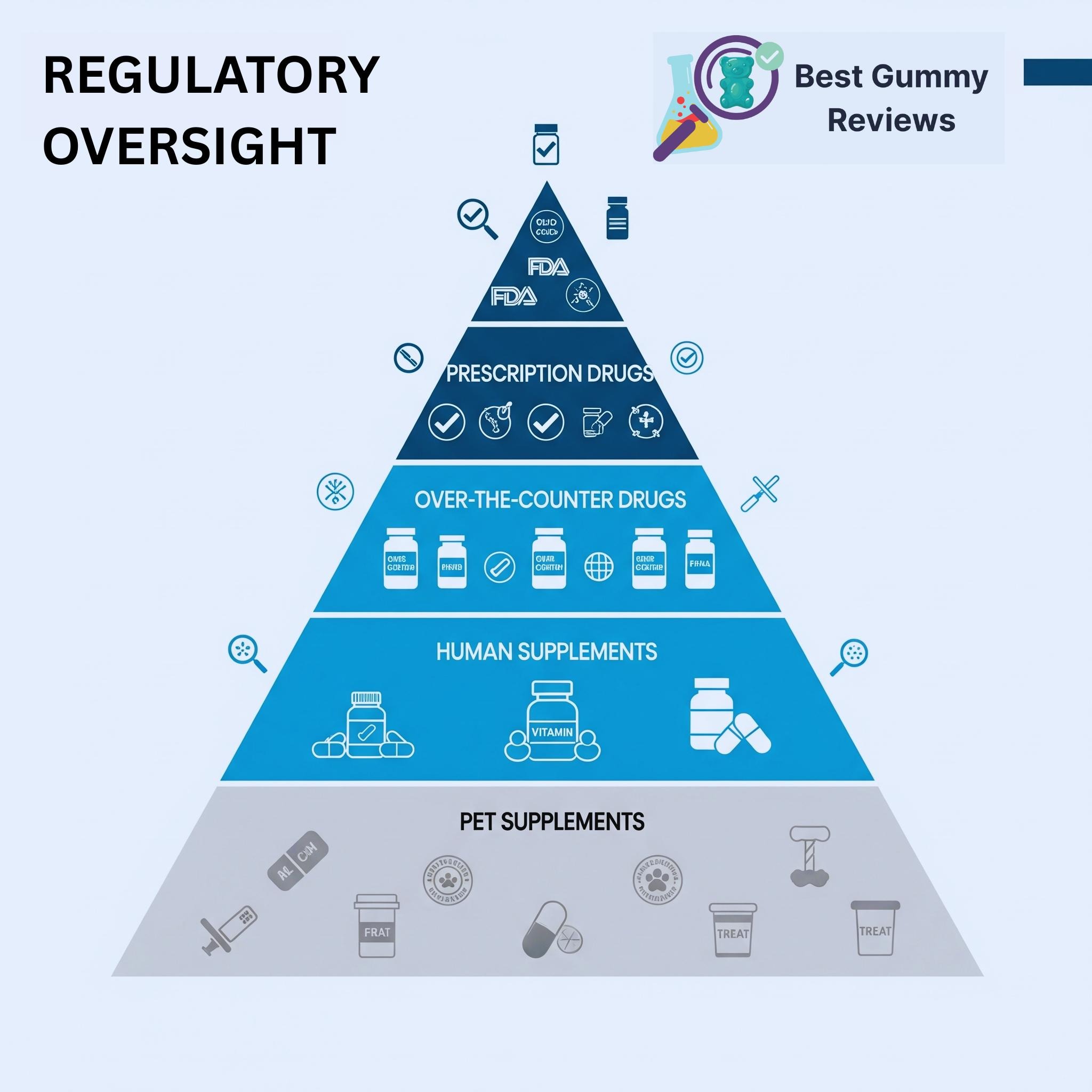
From Pet to Parent: What My Dog’s Supplement Journey Taught Me About Family Health Safety
I’m sitting on the cold linoleum floor of Dr. Rodriguez’s veterinary office, surrounded by colorful bottles and packages promising to fix my senior dog’s arthritis. Max is panting beside me, his usual enthusiasm dampened by the obvious pain in his hips.
As I read labels and compare ingredients, something hits me like a brick wall: I’m being more thorough researching my dog’s supplements than I’ve ever been with my children’s vitamins.
The irony wasn’t lost on me. Here I was, demanding to see certificates of analysis for Max’s glucosamine, asking about third-party testing, and grilling the vet about potential side effects.
Meanwhile, at home, my kids were taking gummy vitamins I’d grabbed off the shelf because they had a cute mascot and promised “immune support.”
That moment changed everything. My dog’s health journey became an unexpected masterclass in supplement safety—one that completely transformed how I approach my family’s health decisions.
It turns out, the same skepticism that made me a better pet parent also made me a more informed human parent.

The Regulation Reality Check That Changed Everything
My deep dive into pet supplement research revealed a shocking truth: the pet supplement industry makes the human supplement industry look highly regulated by comparison. Pet supplements exist in an even murkier regulatory space, often treated as “foods” rather than therapeutic products, with virtually no pre-market safety testing required.
This discovery led me down a rabbit hole that fundamentally changed how I view all supplements.
When I learned that 84% of pet joint supplements in one study had incorrect labels—some containing no active ingredients at all—I immediately went home and started scrutinizing my family’s supplements with the same intensity.
As a busy work-from-home wellness advocate, I’d been making the same mistake many parents make: assuming human supplements were somehow safer by default. The wake-up call came when I realized I’d been trusting human supplement labels at face value while demanding proof for my dog’s products.
I discovered that the certificate of analysis I demanded for Max’s omega-3s was something I could request for my children’s vitamins too. Most companies have this documentation; they just don’t advertise it. The third-party testing I insisted on for pet products? Equally important for human supplements, but I’d never thought to look for it before.

What Pet Toxins Taught Me About Kids Vitamins Safety
Learning about pet-specific toxins opened my eyes to ingredient safety in ways I never expected.
The day I discovered that xylitol—a common sweetener in human products—can kill dogs, I started reading every ingredient list with new paranoia. But this paranoia proved useful when applied to my family’s supplements.
Researching what’s harmful to pets made me realize how little I knew about what might be harmful to different members of my family. Just as a Great Dane and a Chihuahua need different dosing considerations, my 16-year-old and my 4-year-old have vastly different safety profiles and nutritional needs.
According to pediatric supplement safety guidelines, few dietary supplement products are actually recommended for children and adolescents, and only under specific circumstances. The American Academy of Pediatrics emphasizes that nutritional needs should primarily be met through food consumption, not supplements.
The Artificial Color Connection in Pet Supplements
The artificial colors I learned to avoid in pet supplements (some can cause hyperactivity in sensitive animals) made me question why I was okay with Red 40 and Yellow 5 in my children’s gummy vitamins.
If I was reading labels to avoid unnecessary dyes for my dog, shouldn’t I apply the same standard to my kids?
One evening, I found myself comparing my son’s gummy vitamins to the treats I’d rejected for Max. The human version had more artificial ingredients, more sugar, and less nutritional value than the pet version I’d deemed “too junky” for my dog. That was my lightbulb moment.
Supplement Quality Control Standards That Apply to Everyone
I started applying the same “clean ingredient” standards across species. If I wouldn’t give my dog a supplement with a fifteen-syllable preservative name, why was I comfortable giving it to my daughter? The answer was simple: I shouldn’t be.
The cross-contamination research was equally eye-opening. Learning that some facilities manufacture both pet and human supplements made me more aware of quality control standards across the board. If a company cut corners on pet products, what did that say about their human product standards?
For families seeking reliable information about children’s vitamin safety, understanding supplement safety standards becomes crucial. The same rigorous evaluation process I developed for Max now guides all our supplement choices.
Evidence-Based Effectiveness for Family Health Supplements
Pet supplement research taught me to dig deeper into efficacy claims. When I discovered that glucosamine for dogs had mixed clinical evidence—some studies showed benefits, others found it no better than placebo—I started applying the same evidence-based skepticism to human supplements.
The timeline expectations I learned from veterinary research proved invaluable for family supplements too. Veterinarians told me to give joint supplements 4-8 weeks before expecting results with Max. This taught me patience with my family’s supplements and helped me set realistic expectations instead of expecting overnight miracles.
How to Administer Supplements from Picky Pets to Picky Kids
Getting Max to take his supplements consistently taught me tricks that work surprisingly well with children. The routine we established for Max—same time every day, paired with something positive—translated perfectly to family supplement schedules.
I learned that delivery method matters more than I’d realized. When gummy joint supplements didn’t seem to help Max, we switched to a liquid form that absorbed better. This made me reconsider my automatic assumption that gummy vitamins were the best choice for my kids just because they liked them.
Safety First: Storage and Access Control
The storage safety protocols I implemented for pet supplements improved our entire household’s safety. The locked cabinet that kept Max from accessing his supplements also protected my children from accidental overdoses. Treating all supplements like medicine, regardless of how they taste, became our new household standard.
This approach addresses a critical safety concern: thousands of people, including children, are taken to emergency rooms each year after taking dietary supplements unsupervised. Unlike prescription medications, supplement bottles aren’t required to have child-proof lids.
Building a New Family Health Philosophy
My pet supplement research fundamentally changed how I approach my family’s health decisions. The same rigorous evaluation process I used for Max now guides all our supplement choices. I demand the same quality standards, evidence basis, and safety protocols whether I’m shopping for my dog or my children.
The professional relationships I built during Max’s treatment taught me to better collaborate with my family’s healthcare providers too.
Just as I learned to ask my veterinarian specific questions about ingredients, interactions, and expected timelines, I started having more productive conversations with our pediatrician and family doctor.
Teaching Kids About Supplement Transparency
This journey taught my children valuable lessons about health literacy too. They’ve watched me research, compare, and make evidence-based decisions. My teenager now reads supplement labels critically and asks questions about health claims. My younger children understand that medicine should look and be treated like medicine, not candy.
My new transparency standard applies across the board: if a company won’t provide detailed ingredient sourcing, third-party testing results, and clear contact information, I don’t buy their products for any family member—two-legged or four-legged.

The Ripple Effect of Better Health Advocacy
The most important lesson my dog taught me about family health is this: the same level of care, research, and advocacy I provide for my beloved pet should be the minimum standard for my human family members. There’s no reason to accept lower quality, less transparency, or weaker evidence when it comes to my children’s health.
Max is doing much better now, thanks to a combination of targeted supplements, physical therapy, and careful monitoring. But his health journey gave me something even more valuable: the tools and mindset to be a better health advocate for my entire family.
Transitioning from Reactive to Proactive Family Wellness
The same skepticism that protects my dog now protects my entire family. I’ve learned to question marketing claims, demand evidence, and prioritize safety over convenience. This approach has transformed our household from reactive health management to proactive wellness planning.
Sometimes our best teachers come on four legs, and I’m grateful for every lesson. The research skills, safety protocols, and quality standards I developed for pet health have created a comprehensive framework for making informed decisions about my family’s supplements and overall wellness approach.
This transformation from pet parent to informed family health advocate demonstrates how different perspectives can reveal gaps in our decision-making processes. By applying the same rigorous standards across all family members—regardless of species—we can ensure everyone receives the safest, most effective care possible.

Morgan Taylor is a mother of 3. She founded Best Gummy Reviews after discovering shocking quality gaps during her own vitamin D treatment. With 8+ years in nutrition research, she combines lab science with real-world testing to tell you what actually works for the best gummy supplementation. Best Gummy Reviews is thorough but straightforward— supplements should complement your healthy habits, not replace them.



